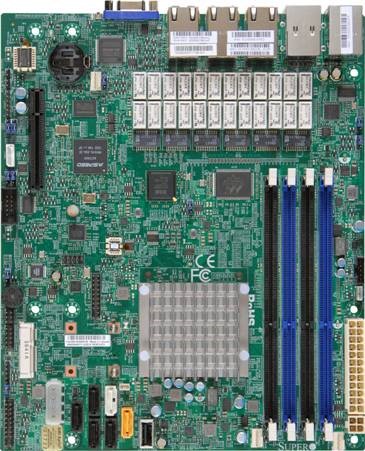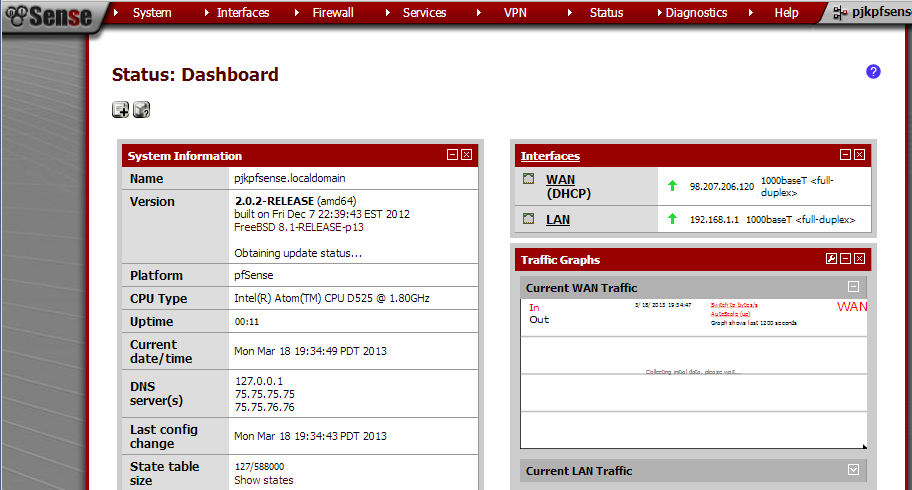After many months of development, pfsense 2.2-BETA is finally here. pfsense is an excellent router/ firewall distribution based off of FreeBSD. Personally, I use pfsense on a daily basis and have been using pfsense 2.2-ALPHA for many months now. The move from pfsense 2.1 to 2.2 may sound trivial, but it has absolutely huge implications for the distribution. Probably the biggest of which is that pfsense 2.2 is based off of FreeBSD 10 while 2.1 was based off of FreeBSD 8.3. The bottom line here is that there is an absolutely massive upgrade in driver support as well as other key features (e.g. mutli-threaded pf support.)
One feature that has made me try pfsense 2.2-ALPHA for the past few months is that it supports Microsoft’s integration components for Hyper-V in the base FreeBSD kernel. What that practically means is that pfsense 2.2 can be run in Hyper-V virtual machines, and platforms such as a Windows 8.1 Pro desktop or the base Hyper-V Server 2012 R2 (free) hypervisor.
The Intel Avoton and Rangely (Intel Atom C2000 series) processors have been extremely popular both on this site and with pfsense users. Many designs incorporate a low power SoC and four gigabit Ethernet ports. We have pfsense both at the colo and I have a pfsense machine at home. This pfsense machine has a Supermicro A1SAi-2550F with a quad core Intel Atom C2550 processor. RAM was just upgraded to 32GB in the box and this weekend saw another 480GB of SSD storage. The machine runs Hyper-V Server 2012 R2 as a base operating system.

Network services such as pfsense, a Ubuntu network functions server and a MAAS server are all housed on the C2550 server. One NIC is WAN, one is a dedicated Hyper-V management NIC and the other two are teamed to the home network (because Hyper-V is great with that.) The net impact is an awesome little server.
This week, Supermicro sent along a motherboard to test that is going to revolutionize pfsense. The 9.6″ x 8″ A1SRM-LN7F-2758. This beastly motherboard uses the quad Intel i354, a dual port Intel i350-AM2 and a single port Intel i210AT network controller. Most of the NICs can run in standalone or in bypass mode.

Overall, it is excellent for a network appliance and there will be more to come soon. Check out the forum thread as we already have benchmarks, lspci output and thermal images posted. The bottom line is that with bypass options and 7x network NICs, an 8 core processor, QuickAssist, and other features, this is going to be the low power network platform going forward. It is currently running Hyper-V and pfsense 2.2-BETA which is an awesome experience.





Awesome motherboard from Supermicro. Hope it comes available soon and Servethehome will test it thoroughly.
Plus I am really curious how it compares to the Supermicro X9SKV-B915/1125/1105 (more info: http://www.supermicro.com/manuals/brochure/brochure_Embedded.pdf – page 9/25)
We reviewed the Supermicro X9SKV-1125C version recently: http://www.servethehome.com/Server-detail/supermicro-x9skv-1125-review-embedded-communications-platform/
One feature this motherboard has that the X9SKV does not is IPMI 2.0 which makes testing much easier.
What is this pass-through option? I know what pass-through is and how it can be used in ESXi, but what does it mean on a motherboard?
Am I the only one who sees 30 s-ata/sas ports? This thing seems designed for high capacity 2.5″ storage for iSCSI with spare room to do real storage networking.
Hi Ewald, I think you may be thinking of the IC’s. There are only 6 SATA ports. I have a sample for review (see the thermal images in the forums)
Tom,
Apologies – I updated that reference to bypass mode. The adapter has the ability to pass traffic through the port pairs in the event of failure.
Ah, right. Still need to look up how this bypass mode works.
Can’t get a clear picture of it in my mind.
I can’t believe I thought those we’re low-res s-ata headers. Makes more sense as a network platform, have you taken a look at VyOS?
Note, the the Supermicro A1SRM-LN7F-2758 motherboard also comes in a complete 1RU system, just add RAM, e.g. the SuperServer 5018A-TN7B. I think I will pick one up for my pFsense upgrade from my current 2.1.2-RELEASE to a 2.2 when it becomes stable and retire a 7 year old Sun box.